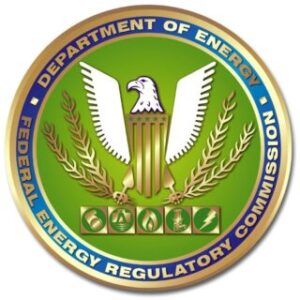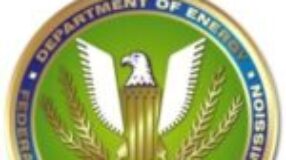
The Office of Pipeline Safety, Research and Special Programs Administration of the Department of Transportation (“OPS”) issued regulations (68 Fed. Reg. 69778)(“Final Rule”) in December 2003 to implement the Pipeline Safety Improvement Act of 2002 (“Pipeline Safety Act”). The OPS regulations established new integrity management requirements for natural gas pipeline operators to assure public safety in “high consequence areas” (“HCAs”), i.e., areas of relatively high population density along pipelines. The PAR is intended to provide guidance on accounting for the cost of pipeline assessment programs, which would include those programs and activities associated with these regulations. It defines the standard for capitalizing the costs as “work … done in connection with major pipeline rehabilitation projects involving significant replacements and modifications of facilities,” that will “extend[] the overall pipeline system’s useful life and serviceability,” producing benefits for “future accounting periods.” The PAR concludes, however, that pipeline integrity assessment program costs should be treated as maintenance expenses because, as a result of the OPS regulations, they are “part of an on-going inspection and testing or maintenance program” that do not meet the Commission’s capitalization criteria because they “are not incurred as part of a one-time rehabilitation project to extend the useful life of the pipeline system.”
INGAA agrees that Commission guidance on the proper accounting treatment of these costs is appropriate, but disagrees with the Chief Accountant’s proposal to treat these activities as maintenance expenses. The fact is that most of the integrity assessment work now being performed constitutes baseline assessment activity required by the OPS regulations during the first 10 years of its integrity management program. Those baseline assessments are a critical part of OPS’s comprehensive pipeline rehabilitation regulations that will ensure the future long-term safe operations of pipelines, and inevitably extend the useful lives and improve the efficiency of pipeline assets throughout North America. The assessments will produce a quantifiable knowledge base regarding pipeline facilities that is of long-term value, regardless of whether any rehabilitation is required as a result. Accordingly, the costs incurred by interstate natural gas pipelines in complying with the OPS safety assessment regulations and performing other such integrity work meet the standards for capitalization set out in the PAR. Moreover, capitalization is consistent with Generally Accepted Accounting Principles (“GAAP”), which permit consideration of the size of the expenditures, and prescribe capitalizing costs “that appreciably extend the life, increase the capacity, or improve the efficiency or safety of the property.” This conclusion is supported by the following considerations.
The long-term benefit of the investments required to meet the OPS requirements is confirmed by OPS’ “Final Regulatory Evaluation” (i.e., the cost benefit analysis for the OPS implementing regulations, hereinafter “FRE”), which viewed the expenditures on establishing integrity management programs and assessments as part and parcel of the larger program to actually repair problems and rehabilitate pipeline assets. See, e.g., FRE at 26-30 (compliance with assessment and integrity management programs will permit earlier identification and remediation of problems that might otherwise have resulted in pipeline failures or accidents). The OPS regulations are, in effect, a government-mandated pipeline rehabilitation program designed to insure the safety of the public.
Second, the Pipeline Safety Act assessments imposed by OPS regulations were deliberately designed to exceed the standards of ordinary maintenance programs followed by pipelines. See FRE at 8 (Pipeline Safety Act “will impose a change in th[e] level of activity, requiring the implementation of integrity management plans and conduct of integrity assessments that have not previously been performed”). Indeed, the new OPS integrity management regulations are separate and distinct from the pre-existing maintenance requirements for pipeline facilities. See 49 CFR §§ 192.701 et seq. (Part 192, Subpart M, setting out OPS’ separate maintenance requirements).
Third, the new OPS regulations impose a spending level of a magnitude that far exceeds previous levels of safety-related spending—a factor that militates in favor of capitalization under GAAP. OPS estimated that in the first year, the costs imposed on the gas pipeline industry would amount to approximately $794 million.8 Baseline testing alone would average over $262 million per year for each of the first 10 years.
Finally, although actual baseline testing on individual pipelines may be distributed over a period of up to 10 years, a single baseline assessment will be developed for each pipeline segment against which future testing can be compared. Therefore, contrary to the PAR, the baseline tests are properly characterized as one-time events rather than on-going inspections, tests, or maintenance.
In sum, the investments associated with the new integrity assessment regulations will rehabilitate the pipeline infrastructure in the United States, significantly extend the useful life of existing pipeline assets, and produce corresponding safety and efficiency benefits for present and future customers. The proposal to expense these assessment costs fails to appreciate the significance, magnitude, and benefits of the program.
Finally, the proposed effective date of January 1, 2005, is unreasonable and does not provide sufficient time for the Commission to consider comments (or rehearing petitions that may be filed), or for the industry to plan and implement any resulting change in accounting policy and procedure for natural gas pipelines. INGAA recommends instead an effective date of January 1, 2006, although pipelines could be given the option to implement changes earlier when possible.






